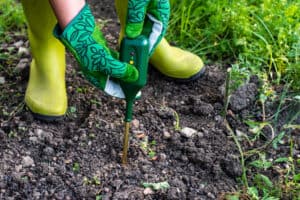What’s the secret to growing vegetables and flowers that are both healthy and carefree? Excellent soil. How can you tell if your soil contains the nutrients that plants require? A soil analysis is required.
The physical characteristics can be an acidic soil, alkaline soil, sandy soils, slightly acidic soil, neutral soil, fine textured soils, or the healthy soil. When you conduct soil sampling and send a sample to a lab, you obtain a complete analysis of the nutrients in the soil as well as information on any inadequacies. That is quite useful information from the soil sample which indicates the plant’s ability to feed itself.
To have a successful agricultural crop or garden, assess your soil samples and amend it as needed to provide your plants the best possible growing environment. You determine the soil pH level and nutrient content of your soil by testing it for soil acidity. Both are crucial in determining how well your garden grows.
The Willamette Valley Soil Quality Guide is the name of the system for testing. According to Richard Dick, Ph.D., a codeveloper of the system and a professor of soil science at Oregon State University, it was built with farmers in mind, but it can be used by gardeners in most parts of the country. You can now conduct many soil tests for determining the nutrient levels, organic matter, ph and nutrient levels as well as other soil nutrients of your soil sample. What are the steps?
Soil Testing for Compaction
Using a wire flag, plunge it vertically into the ground at several points. Make a note of how far the wire bends. The more quickly it bends, the more compacted the dirt becomes. A foot or more of easily penetrable soil is usually ideal for most plants to comfortably grow.
The Importance of Fertilizer
Root growth and water availability are hampered by compacted soil, as well as the free movement of earthworms and other critical soil fauna.
The Importance of pH and Nutrient Levels
Plants, like humans, require a healthy mix of nutrients in order to thrive. Tomatoes, for example, develop blossom-end rot when they are grown in calcium-deficient soil. Excessive levels of a particular nutrient such as nitrogen, for example, generates a lot of leaf growth (in clematis or peppers), but few blooms or fruits (in clematis or peppers).
You’ll have trouble if you take too much of this or too little of that vitamin.
Use a basic pH test kit when testing soil ph to determine the acidity and alkalinity of your soil, as well as its key nutrient levels. Buy a soil test kit from a nursery, follow the soil testing methods, and you’ll have a general idea of your soil’s pH and nutrient levels, but this test only offers approximate results.
For just a small fee, a complete soil test from a qualified laboratory is a wise investment because a soil lab can assess your the pH levels and your entire garden thoroughly.
Conducting a test on different soil types can yield different results. That is the thrill and challenge in vegetable gardening. With soil or compost testing, we will be able to determine certain nutrients, nutrient status, and ph among others. If we take care of our soil, we will have better crop yields, better plant growth, and better plant nutrition. Crops usually do better when utilizing soil amendments or a fertilizer application such as phosphorus, resulting in a much better growing season.



